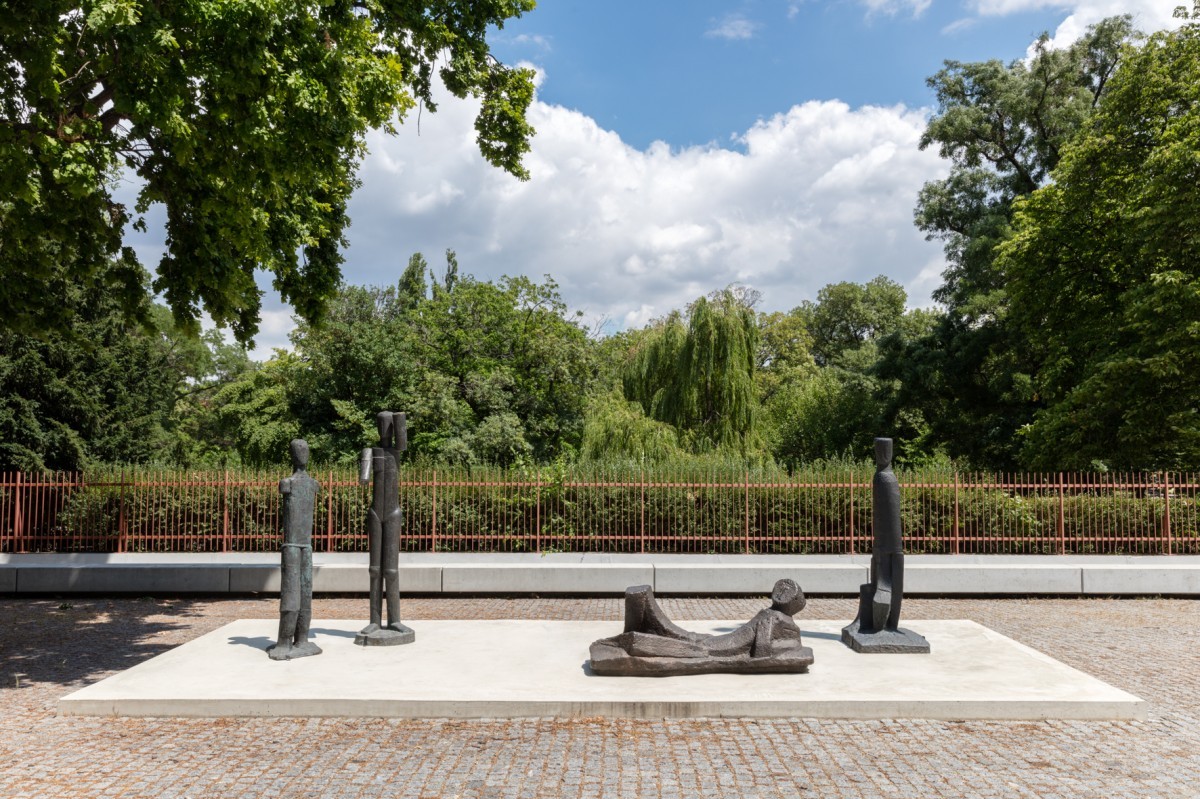Fritz Wotruba
07 Jul - 30 Nov 2017
FRITZ WOTRUBA
Fritz Wotruba at the Sculpture Garden
07 July – 30 November 2017
Curated by Gabriele Stöger-Spevak, Fritz Wotruba Foundation
Curated by Gabriele Stöger-Spevak, Fritz Wotruba FoundationRevamp of the 21er Haus sculpture garden to mark the anniversary of Fritz Wotruba’s (1907-1975) 110th birthday; key works by the Austrian sculptor will be staged in the sculpture garden between 7 July and 30 November 2017
Since 2012, the sculpture garden of the 21er Haus has hosted works by internationally known artists who predominantly work in Austria. For this special occasion, 13 bronze figures by Fritz Wotruba have been mounted in the centre of the garden, upon five concrete bases that were constructed by Heimo Zobernig in 2013 to match the surrounding architecture. The Large Figure Relief from Brussels, a permanent loan from the mumok, and the thirteen selected bronze castings from the Fritz Wobtruba Private Foundation together make up a concentrated retrospective of Wotruba’s work.
The works of Austrian sculptor Fritz Wotruba rank among the ‘classics’ of modern sculpture. As an internationally successful artist and teacher of several generations of sculptors, Wotruba has profoundly influenced Austrian sculpture since the post-war decades, attuning it to the developments of international contemporary sculpture.
The sculpture garden features Wotruba’s most significant work groups in terms of typology and motif: Standing Figure, Reclining Figure, and Crouching Figure. The selection covers all of the sculptor’s productive periods, from the early Torso to his late work from the 1970s, and illustrates Wotruba's ambition to connect figure and architecture. On view are key works from all creative periods, stretching from pre-war, classical figurative pieces to his first works from the post-war years, right up to the 1950s with his abstractions of the human form by means of cubes and blocks, tubular and cylindrical shapes. His works from the 1960s were constructed from non-figurative, individual cubes that came together to form dynamic and vivid figurations. However, during the artist's last creative years, a more organic, humanoid image with round forms emerged within his work.
Fritz Wotruba at the Sculpture Garden
07 July – 30 November 2017
Curated by Gabriele Stöger-Spevak, Fritz Wotruba Foundation
Curated by Gabriele Stöger-Spevak, Fritz Wotruba FoundationRevamp of the 21er Haus sculpture garden to mark the anniversary of Fritz Wotruba’s (1907-1975) 110th birthday; key works by the Austrian sculptor will be staged in the sculpture garden between 7 July and 30 November 2017
Since 2012, the sculpture garden of the 21er Haus has hosted works by internationally known artists who predominantly work in Austria. For this special occasion, 13 bronze figures by Fritz Wotruba have been mounted in the centre of the garden, upon five concrete bases that were constructed by Heimo Zobernig in 2013 to match the surrounding architecture. The Large Figure Relief from Brussels, a permanent loan from the mumok, and the thirteen selected bronze castings from the Fritz Wobtruba Private Foundation together make up a concentrated retrospective of Wotruba’s work.
The works of Austrian sculptor Fritz Wotruba rank among the ‘classics’ of modern sculpture. As an internationally successful artist and teacher of several generations of sculptors, Wotruba has profoundly influenced Austrian sculpture since the post-war decades, attuning it to the developments of international contemporary sculpture.
The sculpture garden features Wotruba’s most significant work groups in terms of typology and motif: Standing Figure, Reclining Figure, and Crouching Figure. The selection covers all of the sculptor’s productive periods, from the early Torso to his late work from the 1970s, and illustrates Wotruba's ambition to connect figure and architecture. On view are key works from all creative periods, stretching from pre-war, classical figurative pieces to his first works from the post-war years, right up to the 1950s with his abstractions of the human form by means of cubes and blocks, tubular and cylindrical shapes. His works from the 1960s were constructed from non-figurative, individual cubes that came together to form dynamic and vivid figurations. However, during the artist's last creative years, a more organic, humanoid image with round forms emerged within his work.


